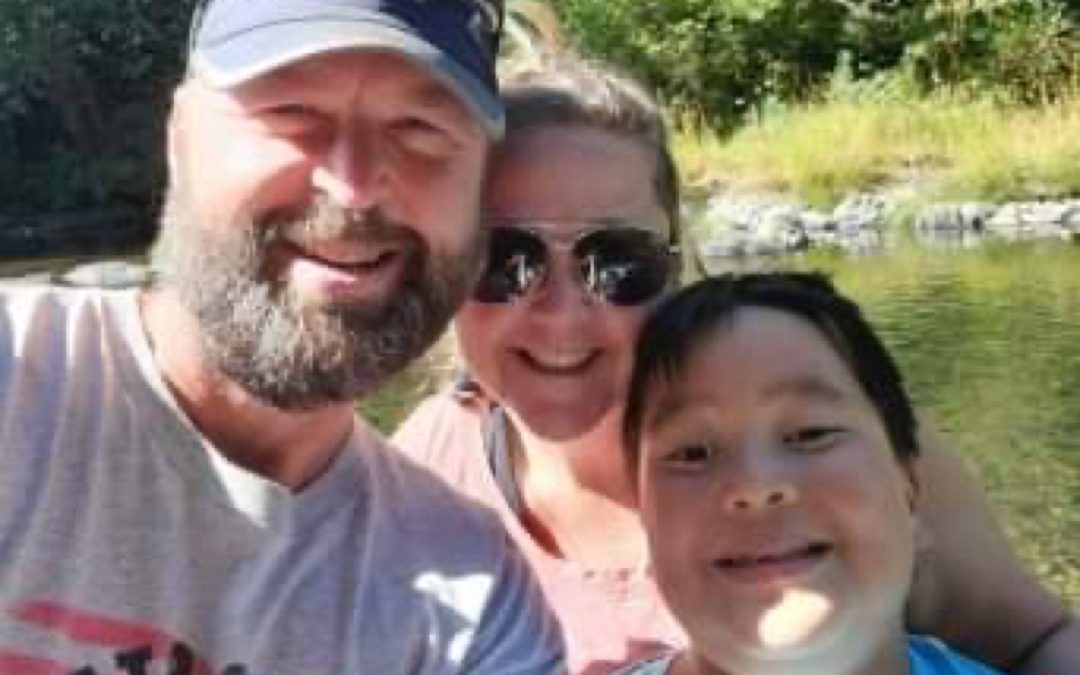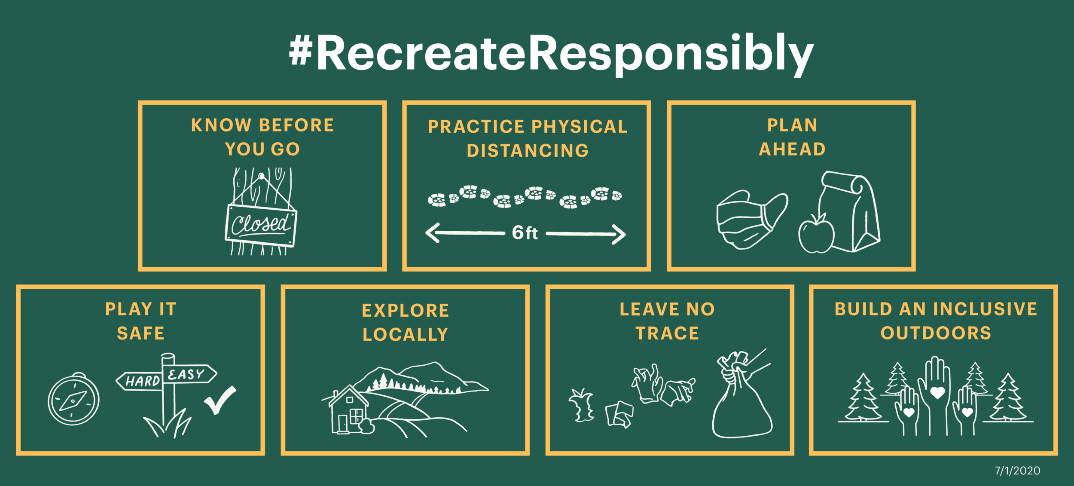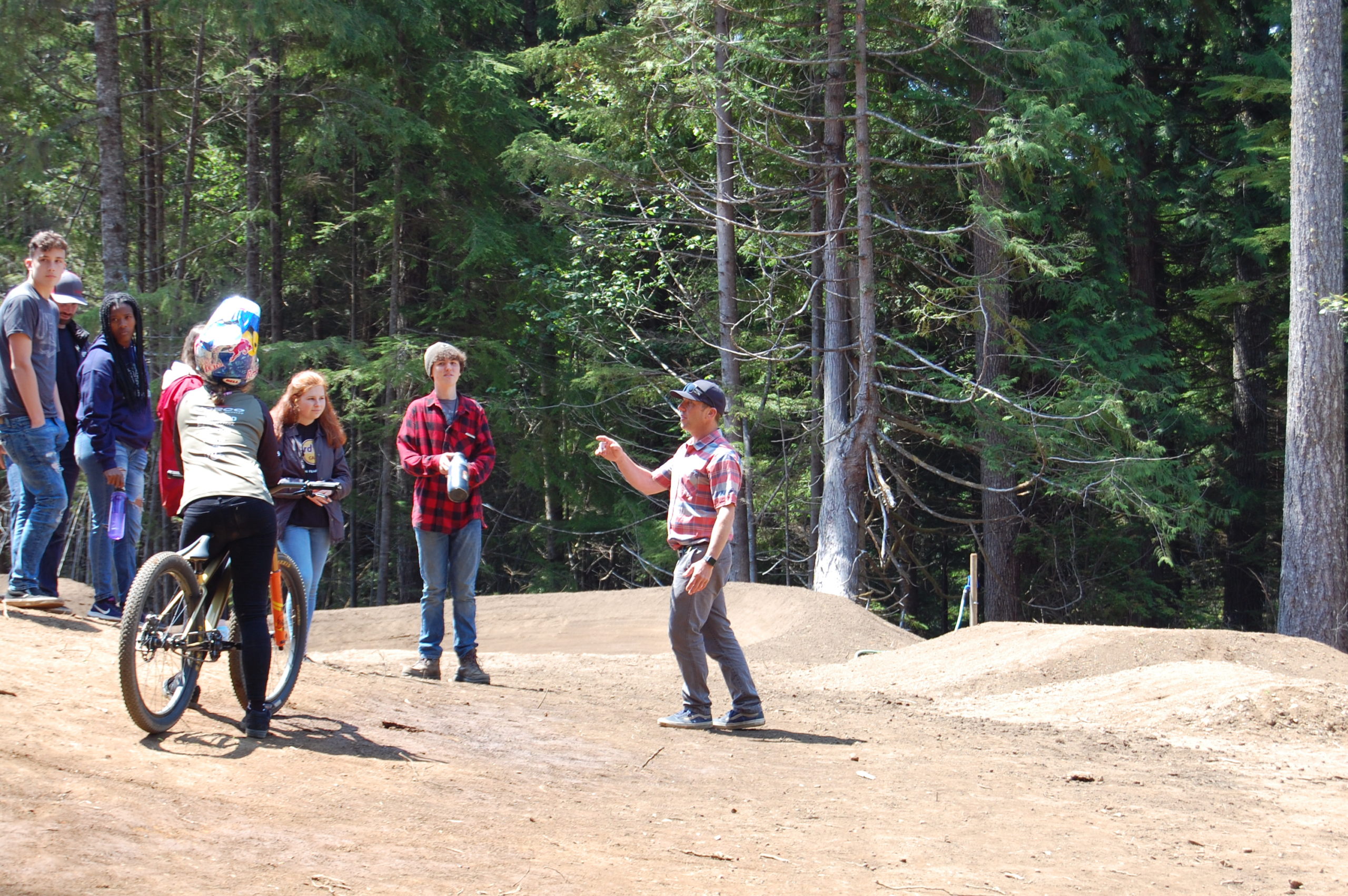
by Guest | Oct 15, 2020 | Being Well
The last 6 months have not been easy, and for local resident Julie Hurliman, the biggest concern has always been the impact on her 9-year-old son, Matteo. At the beginning of COVID-19, Julie found herself allowing Matteo more screen time than normal because it was the only way to interact with friends and other family. She worries about him feeling lonely or isolated as an only child during a time of social distancing. Luckily, Julie was eventually able to create what she calls a “germ circle” with another family who also offered childcare. The families have kept their interactions with the outside world to a minimum, allowing their children to then safely interact with each other normally. As school has started up this fall, this connection has developed into more of a “learning pod, ” which has been increasingly helpful in navigating the challenges of online school.
Like many people, Julie is trying to do what is best for herself and her family in the world of COVID-19, although that in itself has been difficult to determine. With constant streams of conflicting information about COVID-19 in the media, Julie has felt torn: “Maybe I am overreacting to this? And then you see the other stories and effects of COVID and then think maybe you can’t overreact; this is a big deal. It’s really hard to feel sane in all of this.” It has been difficult to feel confident about any decisions, especially with COVID-19 making planning for the future nearly impossible.
Within all of the uncertainty, Julie tries to focus on being kind – both to others and to herself. She points out that we never know what someone else is experiencing and it’s safer to assume that we are all doing the best that we can. She has found that although it is difficult to carve out time for self-care, she tries to take advantage of the opportunities that do come along. This summer has involved hiking, camping, kayaking, and grilling on the back deck – and thanks to COVID-19, a new evening hobby of watching the birds. Her focus is still on her son: “The world feels like such a heavy place with so much going on right now, you can almost feel guilty if you’re not consumed with worry. I don’t ever want that to feel normal for him.” Carving out time to do something fun together has become a priority, whether that involves board games or watching America’s Funniest Videos as a family on Sunday nights. These moments have become highlights of normalcy and joy in the midst of the challenges and chaos that 2020 has brought us all.
AUTHOR: Ariel Slifka, Tillamook County Wellness VISTA
For more local health and wellness information, follow Tillamook County Wellness on Facebook, Instagram and Twitter.

by Guest | Oct 8, 2020 | Being Well
What a year 2020 has been! Each new emergency or disaster has highlighted the frontline heroes: doctors, nurses, paramedics, firefighters, and more. As we watch these courageous people respond to unthinkable challenges, and as some even lose their life doing so, we could begin to feel powerless about what we as ordinary people can do to help. Don’t lose hope! There is much we can do to help.
Start where you are. Look around you in these four areas and find ways that you can help.
In your circle of family and friends: Does someone you know need help? They might not be able to ask for help, for example if they are overwhelmed by responding to the immediate needs of their crisis. Can you bring meals, even simple things like soup or takeout? Can you help clean up after the meals that others have brought? Can you text or call regularly for friendly visiting? Keep in mind that personal and regional phone lines can become overwhelmed during a crisis and time your calls carefully.
In your faith community or civic groups: Does someone need help? Is there a community project that needs volunteers, whether doers or planners or supporters? Doers to get visible things done. Projects also need planners and behind-the-scenes support people. For example, in the early days of COVID pandemic response, a group of Tillamook County community volunteers came together to make and distribute cloth face coverings. Some did the sewing, some offered to buy supplies, and some drove the finished products to drop-off points around the County.
In your personal bounty: Do you have money or things (in new/like-new condition, but that’s another article) that you can give? Ask or do some research before deciding what to give. Sometimes money is most helpful. Sometimes things like clothing would be helpful but may cost more money in logistics getting them delivered than it would cost to just give money to a nonprofit or civic group onsite.
Many nonprofits and faith communities have ways to give online. Many of us also do our banking online and can easily set up a nonprofit or faith community to get a check. When you give, be thoughtful. Know which organizations you trust and decide whether you would like to focus your giving more locally or regionally. To learn more, go to the organization’s website or to a third party like Candid.org where you can look up mission and financial information about local, national and global nonprofits.
In your thoughts and prayers: Think positive thoughts. Pray. Even if you aren’t part of a faith community, expressing gratitude for the blessings you do have and believing that a higher power may be listening to your spoken and unspoken prayers can be helpful. Expressing gratitude has been shown to increase your happiness and decrease stress and pain. Believing in God and praying for grace and courage for yourself and others can inspire healing and hope.
So, take a deep breath. And pick at least one thing you will do this week to take action as an ordinary citizen.
AUTHOR: Melody Ayers, Philanthropy Director of Adventist Health Tillamook
For more local health and wellness information, follow Tillamook County Wellness on Facebook, Instagram and Twitter.

by Guest | Oct 1, 2020 | Being Well
Let’s face it, 2020 has been pretty awful. As a “clinically” positive and high-energy person, even I have struggled to slog my way through these past few months. Being a helper and a problem-solver during these circumstances has left me emotionally exhausted. In fact, a month ago, I went for a run and found myself just bawling – yes, crying – as I ran down the road. It felt like the energy powering my body was taking pent up emotions with it. It caught me completely off guard. It was also an important reminder of something I know as a fitness professional – we can avoid dealing with difficult emotions, but the body stores them whether we like it or not. To be healthy, we have to process and release negative thoughts, traumas and toxic stressors. And, as we are all too painfully aware, there are plenty of stressors right now.
That good cry helped me release much of the stress I had been storing up, so I could find the strength to continue the work of helping this community find ways to be well. As recently announced, I am Adventist Health’s new Director of Community Well-Being. The exciting news is that, through a partnership agreement between Adventist Health and Tillamook County Public Health, I will continue my role as Tillamook County Wellness Coordinator. I am honored and humbled to get to do this work. The enormity of it is not lost on me. This is about people’s lives – their physical, social, emotional and mental health and overall well-being. It’s important work and it takes all of us doing our part to make a difference.
Community. Well. Being. That sums up what we have in store for the next few months. We will be sharing stories from many different perspectives; how people are coping with the chaos of COVID, virtual realities, social division and natural disasters. In times like this, it is okay to not be okay. It’s okay to just be. It’s okay to talk about how you are coping – or not. And, in some cases, we manage to find a bright spot or a strategy that helps makes things a little bit better. We will share those nuggets too.
For me, it’s my Love Train playlist. Long before COVID, I created a workout playlist that really lifts my spirits. I’ve been playing it a lot in recent months. When I hear the lyrics, I project them out into the universe thinking of all the people who may need those messages. It makes me feel like I am doing something good to help others. It’s silly but, hey, it can’t hurt and it makes me feel better and that’s all that matters. If music is your go-to, maybe this can help:
- Love Train – The O’ Jays
- Hope the High Road – Jason Isbell and the 400 Unit
- Come and Get Your Love – Redbone
- The Sound of Sunshine – Michael Franti & Spearhead
- Nothing More – The Alternate Routes
- Stand by Me – Tracy Chapman
- Where is the Love – Black Eyed Peas
- Pretty Shining People – George Ezra
- Everyday People – Sly and The Family Stone
- O-o-h Child – The Five Stairsteps
AUTHOR: Michelle Jenck, Director, Community Well-Being, Adventist Health & Tillamook County Wellness Coordinator
For more local health and wellness information, follow Tillamook County Wellness on Facebook, Instagram and Twitter.

by Michelle | Sep 22, 2020 | Being Well
We are pleased to announce a unique partnership that increases support for Tillamook County Wellness and other collaborative community health improvement efforts. At a system level, Adventist Health has created a Community Well-Being Division and has acquired Blue Zones, a global approach for helping people live longer, better lives. These investments are part of Adventist Health’s commitment to inspiring health, wholeness and hope in the communities they serve, including Tillamook County.
The exciting news is that the Blue Zones initiative shares the same strategic approach as Tillamook County Wellness – to work together across sectors to shape policies, systems, environments and culture to improve individual and community well-being. According to the CDC, about 70% of our health and longevity is influenced by the environments where we live, work, learn, play and age. Those environments and our community cultures also influence our habits, for better or worse. By strategically investing our collective energies to shape these environments, systems and cultures, we can do a lot more to reach our goals of improving health and quality of life for everyone.
As part of this new investment, the role of director of Community Well-Being has been created for each of the communities in which Adventist Health is a partner. With Tillamook County Wellness already in place, this presented a truly unique opportunity. As directed by the Board of County Commissioners, Tillamook County Public Health serves as the “backbone” for the Wellness initiative. Since it began in 2015, Michelle Jenck has served as Coordinator, working with the Wellness backbone. With this alignment in place, Michelle Jenck has been selected to serve as Adventist Health’s Community Well-Being director for Tillamook County; and, through a partnership agreement, Michelle will continue to provide overall coordination of Tillamook County Wellness. In both roles, she will continue to serve as a connector for and among community partners in key areas impacting individual and community health.
“This level of collaboration is something that we have hoped for since the start of Tillamook County Wellness. We are optimistic this new position and partnership will inspire other community partners to consider how they can invest resources to collaborate further in ways that support health in Tillamook,” said Marlene Putman, Tillamook County Public Health Administrator and Director of Tillamook County Community Health Centers.
Eric Swanson, President of Adventist Health Tillamook agrees. “My vision is for Adventist Health to be a trusted partner in our communities. I believe the new director of community well-being demonstrates Adventist Health’s commitment to stand alongside our partners in public health and in the larger community to bring health, wholeness and hope to the communities we serve.”
Michelle holds a Master of Education in Health and Kinesiology, as well as certifications in behavior change and weight management coaching. She has worked as a fitness instructor in multiple disciplines for over 20 years, also serving as a governing board member for Adventist Health Tillamook since 2006. She is a passionate advocate for community health, social responsibility and early childhood development. “I’m humbled and honored to be selected for this role. This is more than a job for me. It’s a passion project. We’ve built a lot of momentum and this new partnership just really ups our game. I can’t wait to see what we can do together” said Michelle.
If you are interested in learning more about Tillamook County Wellness or how you can get involved in making your community a better place to live, work, learn, play and age, contact Michelle at jenckmd@ah.org or visit our partner websites: Tillamook County Community Health Centers, Adventist Health Tillamook, and Tillamook County Wellness.

by Guest | Jul 9, 2020 | Being Well, Move Well
How great is it to have our local parks and trails reopening? After a few months of staying home or laying low, we are finally able to get out and hike, walk, paddle, or stroll in our favorite parks and natural areas. We all know that getting outside is important – it’s a way to care well for ourselves with fresh air, exercise, and a connection to nature. Spending time in nature is good for mental health and physical health and can even help boost our immune system.
 As restrictions lift and we are able to plan for beach walks, hikes, and visits to other natural areas, we need to remember it is important to take care of ourselves and our fellow adventurers, and also to take care of the natural areas we visit. This summer is not like past summers; our outdoor adventures will require more careful planning. Some of our parks, trails, and waysides may not have the same level of services they used to. It is up to us to do our part to make sure they remain the clean, healthy places we love – and that we stay healthy while visiting them.
As restrictions lift and we are able to plan for beach walks, hikes, and visits to other natural areas, we need to remember it is important to take care of ourselves and our fellow adventurers, and also to take care of the natural areas we visit. This summer is not like past summers; our outdoor adventures will require more careful planning. Some of our parks, trails, and waysides may not have the same level of services they used to. It is up to us to do our part to make sure they remain the clean, healthy places we love – and that we stay healthy while visiting them.
Taking care of our natural areas has always been important, but stewardship is especially important now. The definition of stewardship is “the careful and responsible management of something entrusted to one’s care.” The U.S. Forest Service is considering closing some areas because of the amounts of garbage, toilet paper (and related waste), tree cutting, and additional damaging activities. These lands and open space belong to all of us and we are responsible for helping take care of them.
Here are some tips to make sure you have a safe outdoor adventure while protecting the parks, trails, or other outdoor spaces you visit:
- Plan ahead and be prepared.
- Make sure the site you plan to visit is open before you head out, and you should have a back-up plan in case it is closed or too crowded when you get there. Plan weekday outings when possible.
- Pack food, drinking water, hand sanitizer and any other supplies you might need.
- Keep in mind some services (like restrooms, drinking fountains, or trash cans) may not be available and plan ahead for that.
- Stay safe.
- Stay in small groups; ideally, your outdoor activity should include just the people in your household. Maintain a safe distance (6-10 feet) from other people not in your group.
- Wear a mask or other face covering in public spaces.
- Wash your hands thoroughly and often or sanitize hands as needed, especially before eating.
- Stay home if you are feeling sick.
- Leave no trace.
- Bring along a trash bag and pack out all your trash and garbage. Leave the trail/beach/park as (or better than) you found it.
- Remember, some area parks may not have the same resources they once had so it’s up to all of us to help take care of the places we love.
- Thank park rangers and other staff when you see them. They are working hard to make these spaces available for use under very challenging circumstances.
We know you want to get out and Explore Your Outdoors, and Tillamook County Wellness is working on a plan to help you have a little extra fun while you’re at it. Stay tuned to @Tillamook County Wellness on Facebook, Instagram, Twitter and Pinterest for details coming soon!
Here are some helpful resources for making sure you are prepared for your next outdoor adventure:
In the meantime, let’s all take the Tillamook Coast Pledge so we are ready to be safe and responsible while enjoying our beautiful and beloved open spaces:

For more local health and wellness information, visit tillamookcountyhealthmatters.org or follow Tillamook County Wellness on Facebook, Instagram and Twitter.

by Michelle | Jul 2, 2020 | Being Well, Move Well, Uncategorized
Imagine if there was a map that included all the outdoor recreation amenities and trails in Tillamook County. How cool would it be to have a convenient way to find places to hike, ride, paddle, bike and bird watch within minutes from where you live?
Thanks to a partnership between Tillamook County Wellness (TCW), Visit Tillamook Coast, Northwest Youth Corps and the U.S. Forest Service, having access to this exciting resource is closer than you might imagine. Beginning in January 2020, efforts have been underway to build a GIS database and map for all recreational opportunities throughout Tillamook County. GIS Intern, Samantha “Sam” Goodwin and TCW Access to Physical Activity (APAC) Co-Chair, Marty Wisehart, were recently interviewed on KTIL’s Tillamook Today show to share more about the project.

View from Pacific City Pathway Trail
“There are hundreds of recreation activities in Tillamook County,” Goodwin stated in her interview, “but right now people have to search all around from individual sites like State Parks or the Oregon Department of Forestry to find what there is to do here.” Sam has worked with local, state and federal agencies to gather all that data and put it into one system. In the process, she has discovered many local waysides, waterfalls, parks and community pathways for which there is no official information.
“We’re building a one-stop place for recreation,” says Sam. “This is really meant to help locals get out and enjoy activities and the natural beauty we have here.” Nan Devlin, Executive Director for Visit Tillamook Coast, states that “what is good for locals is also good for visitors and vice versa,” noting that Transient Lodging Tax (TLT) revenue directed to her organization is being used to support this work.
In addition to his leadership role with TCW, Marty Wisehart is President of the Tillamook Off-Roads Trails Alliance (TORTA), which has secured funding to build more than 30 miles of mountain biking trails in the Siuslaw forest near Sandlake in partnership with the U.S. Forest Service. Trail building is slated to begin this Fall with access to trails anticipated by Summer 2021. TORTA has been actively involved in increasing community access to recreation, especially for kids and youth, by building trails and helping coordinate Trails Day events. According to Marty, “we have so many recreation assets here and a lot of it is just not known.” He adds, “It’s not enough to build opportunities for people to get active, we have to make sure people have the information they need to decide if an activity is right for them – if they need special gear, how easy or hard the trail is, and so on. The more information we can give to people, the more likely they will feel confident about trying something new and that’s really what we want to see.”
The map includes details for all trail types, surfaces and difficulty levels, as well as access for people with disabilities. It will be sortable by different types of activities, including boat launches and water trails, making it easier for people to plan outings. And, for people worried about their secret destinations being discovered by the masses, county leaders acknowledge this is already happening. County Commissioner, Bill Baertlein emphasizes, “Visitors are already coming and will continue to travel here to enjoy our trails and outdoor recreation. This map and the processes supporting it will help us get out in front of the issue and be proactive rather than reactive.” Leaders also state that having more places on the map helps spread activity around, preventing heavily visited areas from being “loved to death.”
Tourism leaders agree that increasing recreation within the local population instills a sense of pride and ownership, creating stewards who help protect these beautiful places. North Coast Tourism Management Network’s volunteer beach and trailhead ambassador program is one example, as are volunteer opportunities through the local chapter of Trailkeepers of Oregon. For information on how to volunteer as an ambassador contact Arica Sears at icom@thepeoplescoast.com and to learn more about Trailkeepers visit https://www.trailkeepersoforegon.org/get-involved/.
Thanks to an extension of funding and on-going support from the sponsoring agencies, the GIS mapping project will continue until all identified locations are completely mapped and approved by governing agencies. Next the group will determine how users can access the map platform on-line. Michelle Jenck, Tillamook County Wellness Coordinator indicates there is a plan to include a page or link from their new website scheduled to launch this summer.
Like & follow Tillamook County Wellness on Facebook, Instagram and Twitter. New Tillamook County Wellness website coming soon!






 As restrictions lift and we are able to plan for beach walks, hikes, and visits to other natural areas, we need to remember it is important to take care of ourselves and our fellow adventurers, and also to take care of the natural areas we visit. This summer is not like past summers; our outdoor adventures will require more careful planning. Some of our parks, trails, and waysides may not have the same level of services they used to. It is up to us to do our part to make sure they remain the clean, healthy places we love – and that we stay healthy while visiting them.
As restrictions lift and we are able to plan for beach walks, hikes, and visits to other natural areas, we need to remember it is important to take care of ourselves and our fellow adventurers, and also to take care of the natural areas we visit. This summer is not like past summers; our outdoor adventures will require more careful planning. Some of our parks, trails, and waysides may not have the same level of services they used to. It is up to us to do our part to make sure they remain the clean, healthy places we love – and that we stay healthy while visiting them.

